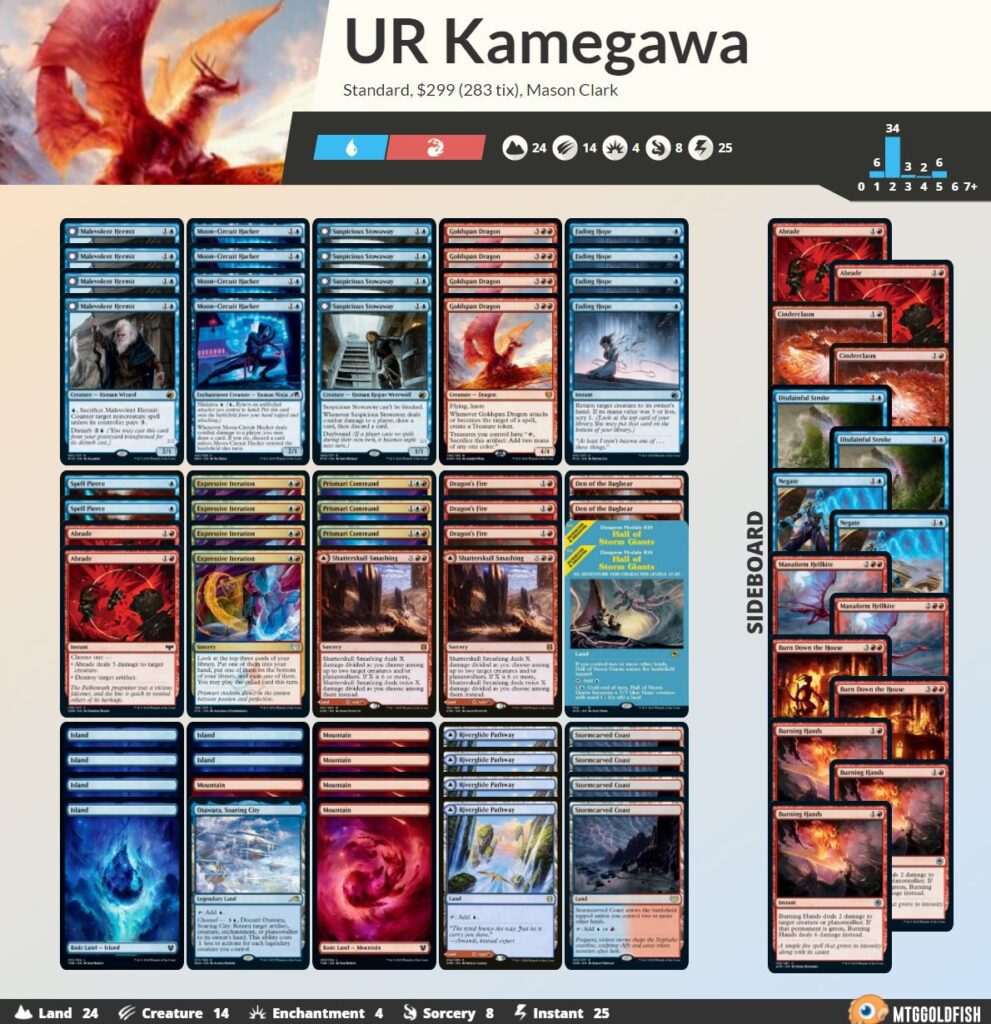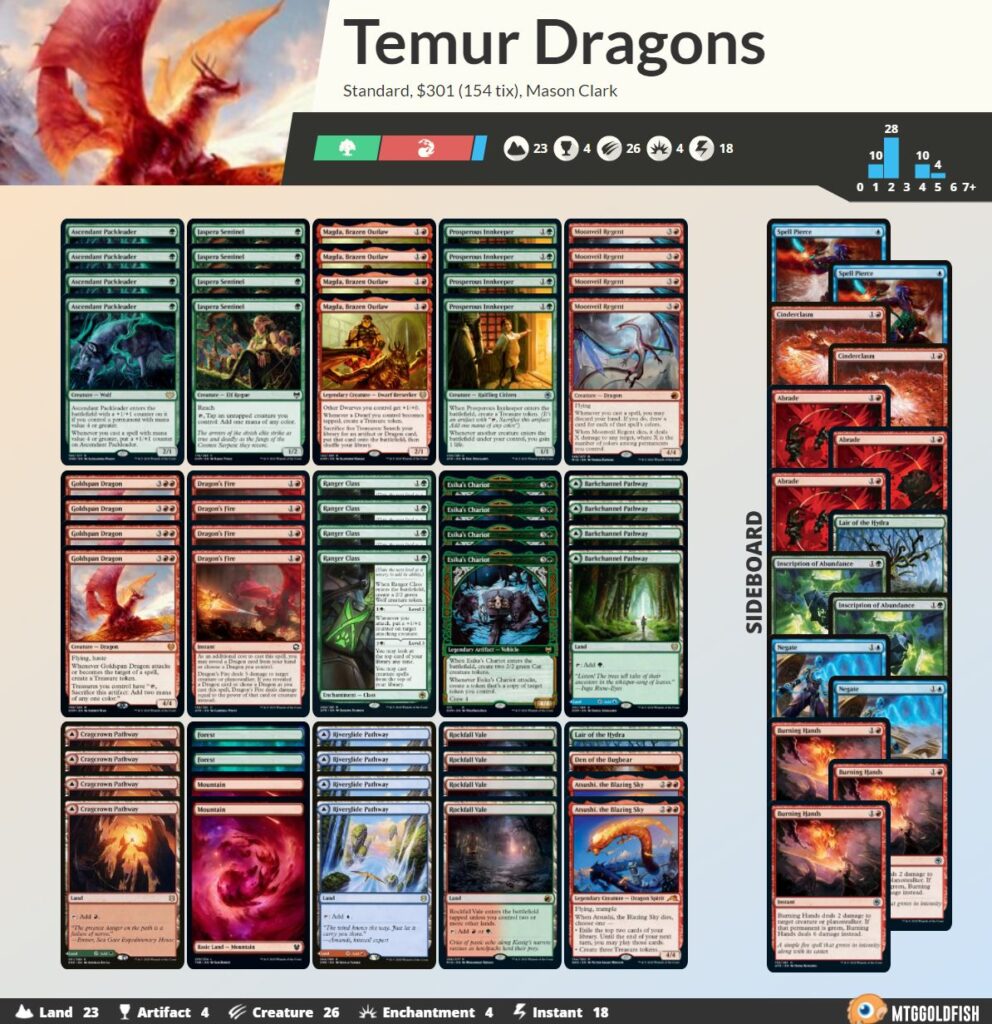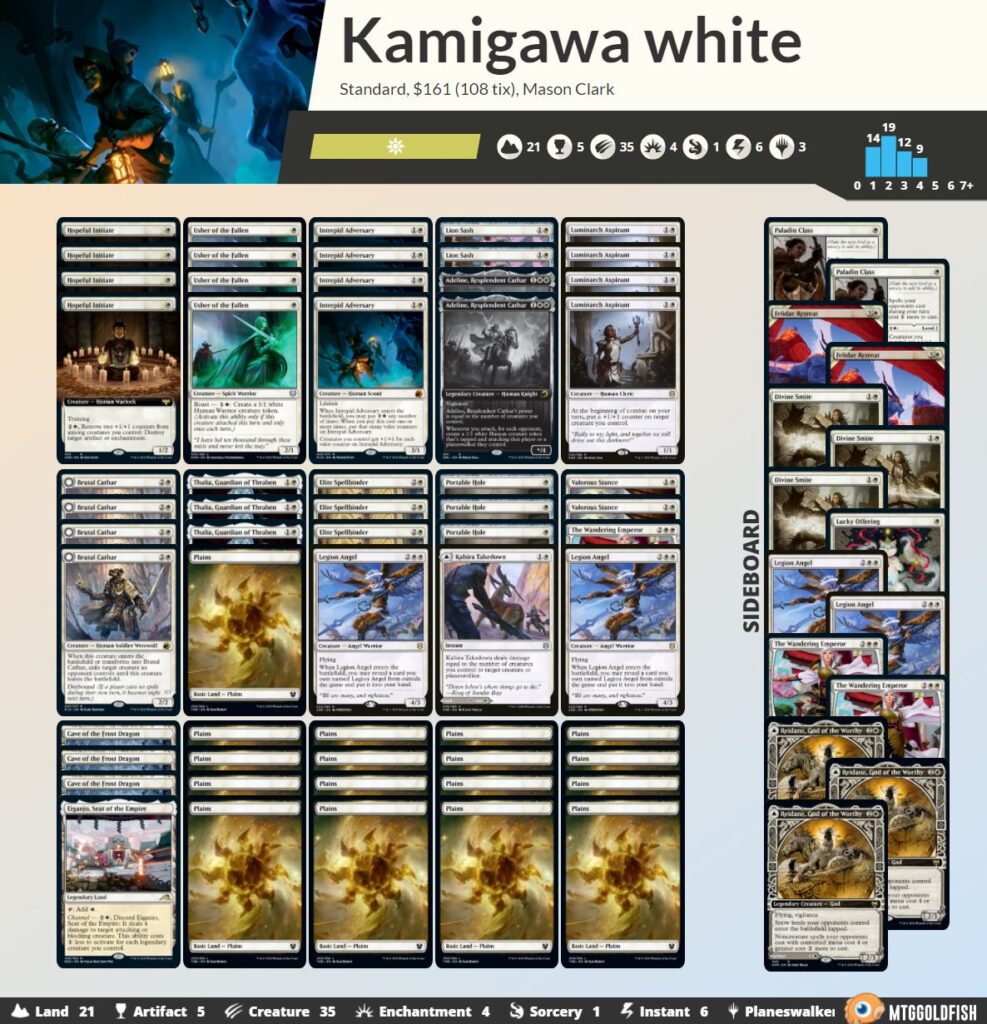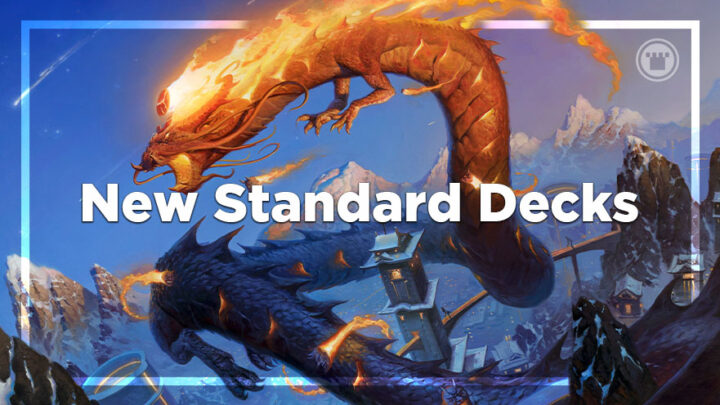Kamigawa: Neon Dynasty is out now on Arena, and I’m here today to show off three new decks for the format. All these decks are upgrades of past decks that have had success in the format, and all three got some new tools with this set. If you’re looking for a competitive deck that doesn’t cost 50 wildcards, then one of these decks might be for you!
Izzet Tempo

This archetype was overshadowed by Alrund’s Epiphany decks in recent months, but with that pressure now gone, we can explore a lower-to-the-ground build of Izzet. Your main goal is that of any tempo deck: disrupt the opponent enough that you can pressure them, and win before they can stabilize. There aren’t any decks playing this role in the format currently, and duplicating the success of previous Standard all-stars like Rogues is very appealing.
Moon-Circuit Hacker is a great addition to this deck. The ninjitsu ability will be nice in a few spots, and greatly appreciated in combination with a disturbed Malevolent Hermit. More importantly, having another turn-two looter will be crucial to developing your board and making sure you don’t flood out. Suspicious Stowaway draws were always the best part of this deck in the past, and having four extra copies should help make you always able to keep up and push your advantage.
Along those lines, having Spell Pierce back in Standard will also give this deck a huge edge. When your opponents are trying to resolve big clunky cards, having cheap permission that you can play while developing will put them in a very awkward spot. It’s a small upgrade, but still a meaningful one.
Otawara, Soaring City is a card you might have missed, but I think it’s very good for this deck. Turning one of your land slots into a spell if you draw it in the mid-game is very appealing for a strategy like this. To be honest, I think only having one might be a mistake, but I wanted to start small when adjusting the mana base. That being said, in the early game, it won’t impact you much, and mid- or late-game, it’s a potentially game-swinging effect. While you won’t be able to reduce the cost of the ability in this deck, I think the single land slot doubling as a somewhat expensive impactful spell is a fine place to be.
Tempo decks are always really fun to play in Standard, and this is the deck I am most excited to jump onto the ladder with.
Temur Midrange

We saw this deck rise up as a response to the Alrund’s Epiphany decks of last season, most notably in the hands of Jean-Emmanuel Depraz at Worlds. Since the banning of Alrund’s Epiphany, people have dropped this deck, but the mana engine and core game plan are still incredibly powerful in the current metagame. Strong early flyers backed up by light permission will overpower many decks or avoid the cluttered board states Mono-Green presents. Plus, you can disrupt and pressure the more controlling decks enough to keep them from winning the game.
Atsushi, the Blazing Sky is a great addition to this deck from Kamigawa. While the flying body is appreciated, the biggest draw to playing this card is the on-death trigger. Previously, most of the creatures in this deck needed a little time to start generating a lot of value (with the exception of Goldspan Dragon), so a threat that can replace itself with two new cards is welcome here. While you don’t want a full playset of Atsushi, having a couple is very nice. It is also another Dragon, which will help turn Dragon’s Fire on more reliably to kill opposing Dragons or Esika’s Chariots.
Much like Izzet Tempo, Temur Midrange benefits from Spell Pierce’s return to Standard. While it’s only a sideboard card for this deck, it allows you to more easily develop your board in the early turns and disrupt your opponents enough to deploy a crucial threat and start pressuring them. One thing to note about this deck is that it turns the corner really quickly, so any opponent looking to play around Spell Pierce won’t have much time to wait.
I expect to see a lot of players pick this deck up early in the season, but it’ll need a good bit of tuning depending on which threats end up seeing play. But this week, any decks that are trying to do too much will simply crumble under the pressure this deck presents.
Mono-White

Mono-White has been a staple of this format since rotation. While it has fluctuated in power level, its presence in Standard has been a constant. And fortunately for Mono-White players, Kamigawa is looking to up the power of this deck with a few key additions.
Lion Sash is a great example of this. While being a slightly below-rate creature to start with, it gives this deck a mana sink along with a source of graveyard hate. It’s similar to Scavenging Ooze, which has shown itself to be a solid roleplayer in aggressive decks. Plus, Lion Sash can be equipped to a creature, bringing all its buffs along with it. This allows you to set up some flyers while stalling the ground to swing the race.
In my piece on Kamigawa’s planeswalkers a few weeks back, I proposed that The Wandering Emperor would be great in white control shells. I still think that’s true, but I have also come around on it in just about every white deck. Just a single copy of this card allows you to swing races you normally couldn’t win, while still buffing your creatures to blow out combat or deal lethal. The Emperor will also provide a few bodies if your opponent’s deck is heavy on removal.
Another “blink and you might miss it” card is the one-of Eiganjo, Seat of the Empire in the deck’s mana base. While not nearly as impactful as Otawara, in my opinion, it’s still worth the slot; the ability to answer a threat without lowering your land count is just too good to pass up. As with Otawara, we could be playing more than one copy of this card, but I wanted to reduce the chances of drawing multiple copies of this legendary land.
This set has some wild cards, so hit the streets of Kamigawa and start battling! If you’re looking for more decklists, be sure to follow me on Twitter at @masoneclark.

Mason Clark is a grinder in every corner of the game who has played at the pro level and on the SCG Tour with Team Nova. Whether he’s competing in Standard, Historic or Modern, Mason plays with one goal in mind: to be a better player than he was the day before. Check out his podcast, Constructed Criticism, and catch his streams on Twitch.

